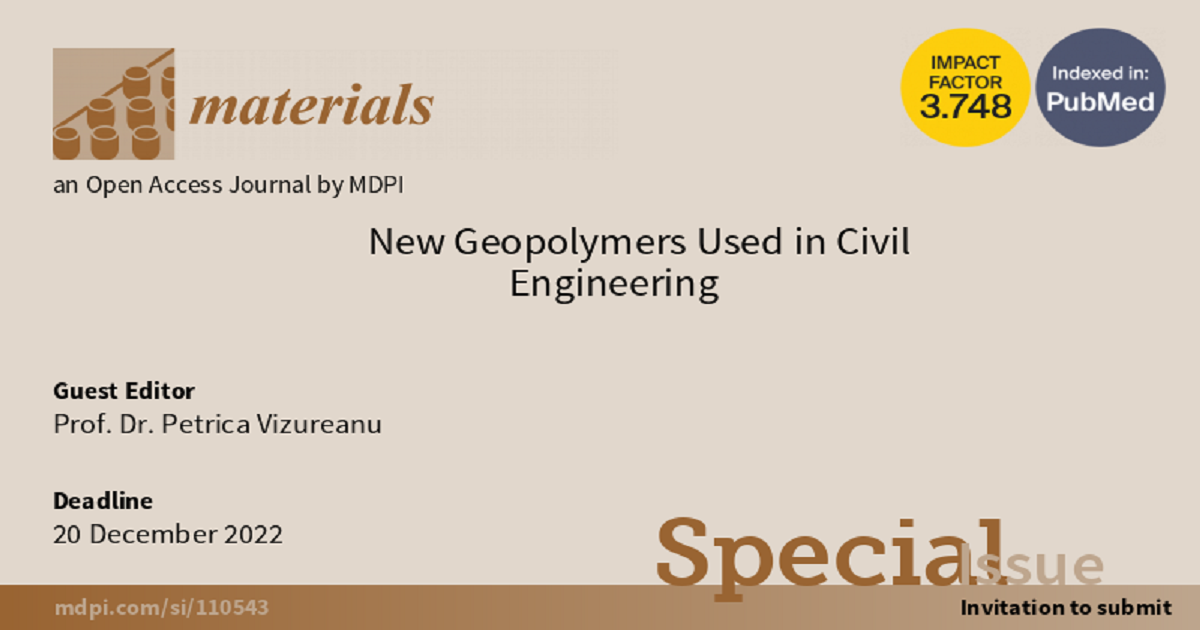New Geopolymers Used in Civil Engineering
A special issue of Materials (ISSN 1996-1944). This special issue belongs to the section "Construction and Building Materials".
Deadline for manuscript submissions: closed (20 December 2022) | Viewed by 5792

Special Issue Editor
Interests: biomaterials; geoplymers; heat transfer; heat treatment; expert system; refractory materials; mine tailings
Special Issues, Collections and Topics in MDPI journals
Special Issue Information
Dear Colleagues,
Turning waste into resources is key to a circular economy. The need for proper waste management was defined by the EU in the document Roadmap to a Resource Efficient Europe (EU COM 2011) and was additionally underlined in the last few years by the introduction of the concept of the circular economy by the European Commission (EC), initially in 2014, "Towards a circular economy: a zero-waste program for Europe" (EU COM 2014), and next in 2015, "Closing the loop: an EU action plan for the Circular Economy" (EU COM 2015). The term "waste valorisation" refers to any industrial processing activities that aim to reuse, recycle, or compost waste, thus converting it into valuable products or resources of energy. It usually takes the form of one of the following activities: the processing of residue or by-products into raw materials, the use of discarded finished or semi-finished products as raw materials or energy resources, the use of waste materials in manufacturing process stages, and the addition of waste materials to finished products.
Prof. Dr. Petricǎ Vizureanu
Guest Editor
Manuscript Submission Information
Manuscripts should be submitted online at www.mdpi.com by registering and logging in to this website. Once you are registered, click here to go to the submission form. Manuscripts can be submitted until the deadline. All submissions that pass pre-check are peer-reviewed. Accepted papers will be published continuously in the journal (as soon as accepted) and will be listed together on the special issue website. Research articles, review articles as well as short communications are invited. For planned papers, a title and short abstract (about 100 words) can be sent to the Editorial Office for announcement on this website.
Submitted manuscripts should not have been published previously, nor be under consideration for publication elsewhere (except conference proceedings papers). All manuscripts are thoroughly refereed through a single-blind peer-review process. A guide for authors and other relevant information for submission of manuscripts is available on the Instructions for Authors page. Materials is an international peer-reviewed open access semimonthly journal published by MDPI.
Please visit the Instructions for Authors page before submitting a manuscript. The Article Processing Charge (APC) for publication in this open access journal is 2600 CHF (Swiss Francs). Submitted papers should be well formatted and use good English. Authors may use MDPI's English editing service prior to publication or during author revisions.
Keywords
- geopolymer
- waste
- mine tailings






